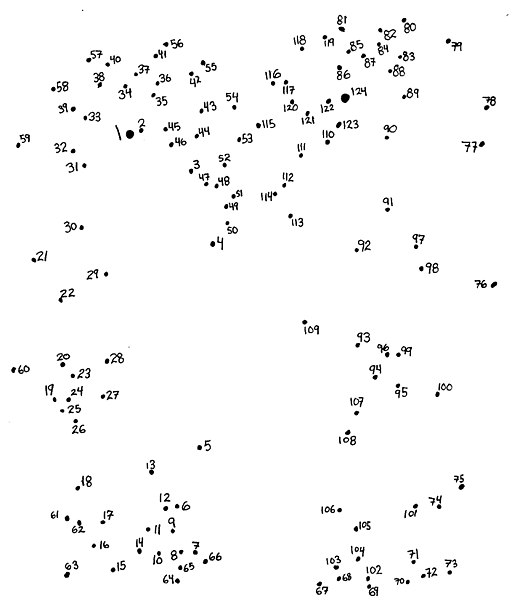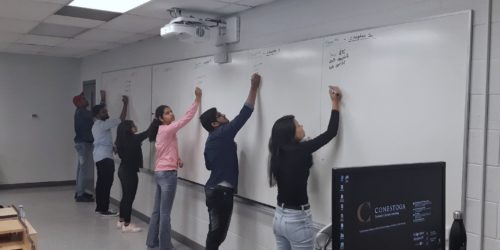Helping Students Connect the Dots
By Paula Barrett, Professor and Coordinator of the Bachelor of Public Relations

Paula Barrett is a professor and program coordinator in the Bachelor of Public Relations degree program at Conestoga College. Paula has been with the college full-time for 16 years and helped build and launch both the BPR as well as the PR diploma. She received the college’s Employee Innovation Award in 2016 for her stint as a Senior Intern, returning to the PR industry to learn from her grads. Paula tweets about education, communication and random life topics @PBarrettPR.
As a child, I spent countless hours playing Connect the Dots. As my ”creations” took shape I felt not only a sense of accomplishment but also the security that I had found my way; I had solved a great mystery.
Let’s face it: Regardless of our newfound mastery of ZOOM and other tools, we’re facing the greatest puzzle of our teaching careers. As my student’s mom delivered him a sandwich on camera this week, I couldn’t help but reflect on our strange predicament and the opportunities it has presented (sandwiches and so much more!)
An Opportunity for Greater Course Logic
Remote teaching has brought me back to my childhood game. All courses contain a logic: a path from the learning outcomes to the learning activities. We usually call this “scaffolding.” The concept is not new. However, in my (albeit brief so far) experience re-building for remote, I’ve taken my courses past the familiar scaffolding. I’ll call it “superscaffolding.”
(Sidebar for the easily distracted: I googled this term and it exists in biology, related in some way to genome structures. Apologies to all scientists reading this blog and my past science teachers if I butchered the concept in my eagerness to connect more dots.)
With the confinement of COVID-19, we’re eager for human connection, but also for another kind of connection, too. More than ever before, students need to connect the dots to understand the course. They need to see how the reading connects to the recorded lecture, how the synchronous engagement activity ties to the online discussion board – how every single dot connects so they can see how the picture of the course itself is taking shape. Their disconnectedness from the world and campus must be balanced by greater connectedness among the different aspects of the course.
Superscaffolding in My Remote Teaching
Here’s what’s working for me so far in my remote teaching to help students to “connect the dots”:
- Prior to class, students view a 20-min recorded video lecture. I make sure to include not only slides, but a short on camera fireside chat component. Showing ourselves versus a disembodied voice over slides, even with our on-camera insecurities, builds credibility and connection. I will neither confirm nor deny that I wore a Halloween costume for a recent lecture.
- I post a related topic / question to the eConestoga class discussion board, giving them the week to reply / comment. This is worth a small % of the final grade.
- A class agenda, posted at least 48 hours ahead of the synchronous class, guides our time together and highlights key concepts from the video lecture, readings and their discussion board posts.
- In this meeting, we review the discussion board threads and key lecture concepts. We synthesize, often with direct tie-back to the text and recorded lecture. Some weeks we build collaborative word clouds, docs or slide decks summarizing the discussion board
.and taking the ideas further. These materials will be available for their reference during the exam.
There’s not just a logic to my approach but also a flow. Because students can confuse online with remote, when one course element flows to the next it keeps students involved and engaged in pace with the material and with one another. This is an important distinction from a fully online course which may allow more individual pacing.
Early Student Feedback
In this less than 10-week experiment, the feedback from students is that my course “makes sense” is “logical” and that they feel “organized” and “on top of things.” These aren’t words I have ever aimed for in my teaching evaluations. I prefer adjectives like “dynamic” and “fun.”
But this semester these words are music to my ears. At a time when students face deep personal insecurities and are anxious about a world off-kilter, I see helping them connect the dots as one of the most satisfying and compassionate outcomes we can achieve.




